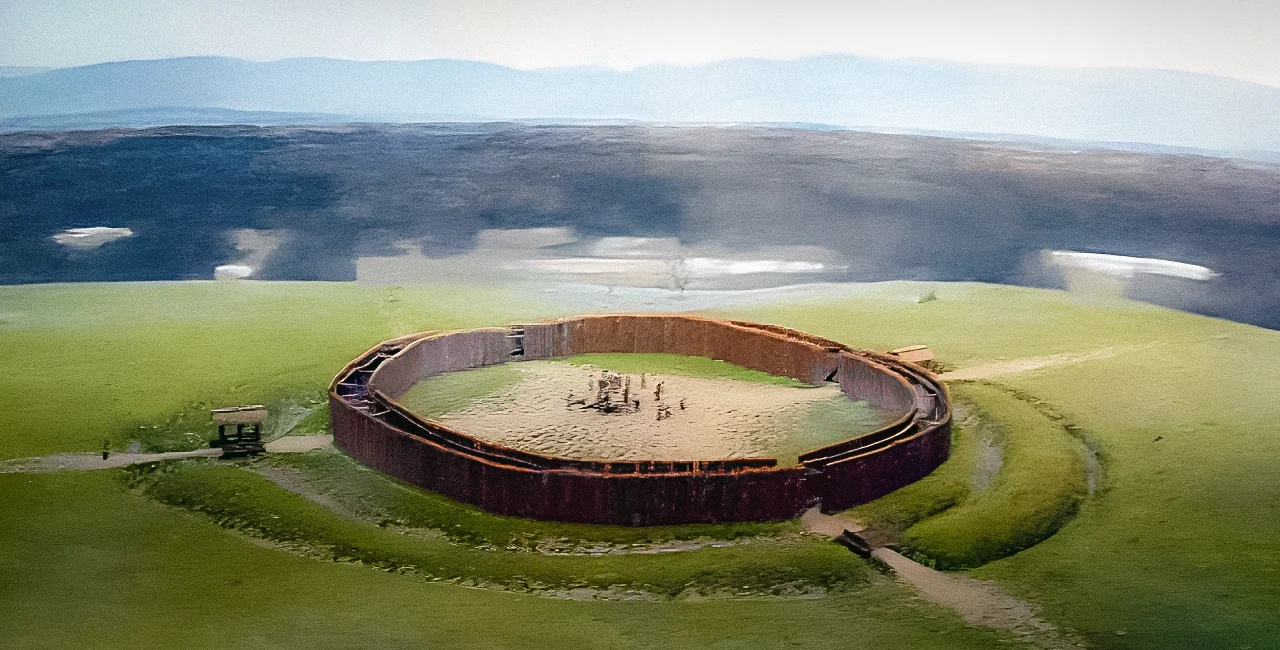Archaeologists have made an extraordinary discovery during excavations in the Vinoř district near Prague. An airplane flying above the ground spotted a mysterious formation - a massive circular structure dating back to approximately 7,000 years ago.
This discovery has caused a stir in the academic world and attracted the attention of the public, as it is thought to predate Stonehenge by 1,500 years and offers tantalizing clues about the people who built it and its purpose.
What was it used for?
At first glance, the wine roundel (or disc), as it is called, appears to be a simple structure – a large circle surrounded by a ditch with a diameter of 55 meters. However, this simplicity is deceiving. The construction is part of a family of similar structures known as rondels, which were primarily built by communities belonging to the Linear Pottery culture that existed in present-day Poland, eastern Germany, and northern Bohemia.
Led by Miroslav Kraus, excavations have not only revealed the complete structure of the wine roundel but also unearthed valuable artifacts such as pottery shards, animal bones, and primitive stone tools. Although the local roundel's existence was initially discovered in the 1980s, it was only recently possible to fully uncover its structure.
Thanks to advances in aerial and drone photography, rondels have gained significant attention among archaeologists. These structures are believed to represent the oldest known architectural forms in Europe.
Typically consisting of one or more concentric ditches with several entrances, the roundels' primitive exterior masks their sophisticated internal mechanics. The inner circles were likely lined with wooden stakes, while the gaps between them may have been plastered with mud.
Still more questions than answers
The wine roundel has sparked numerous speculations and theories. Are these roundels ancient ritual gathering places, astronomical observatories, or perhaps multi-purpose community centers? A study of Germany's Goseck Circle, another roundel, conducted in 2012, suggests it served as an ancient observatory or calendar due to the alignment of its entrances with the solstices. However, experts like Jaroslav Řídký propose that they had multi-purpose uses, including joint meetings, rites of passage, or economic transactions.
One intriguing aspect is that these roundels disappear from historical records around 4600 BC. Their sudden disappearance adds to the mystery and leaves more questions than answers. With more than a quarter of all known roundels located in the Czech Republic, ongoing excavations such as the one in Vinoř may hold the key to unraveling the ongoing mystery of why these ancient structures fell into oblivion.
The discovery of the roundel in Vinoř has aroused significant interest among academics and the public. As archaeologists meticulously sift through the layers of history, carbon-date organic materials, and interpret artifacts, the Vinořský rondel stands as a timekeeper. It remains to be seen what experts deduce from the ancient monument and the extent to which it could shed light on how life was thousands of years ago.












 Reading time: 2 minutes
Reading time: 2 minutes 

























